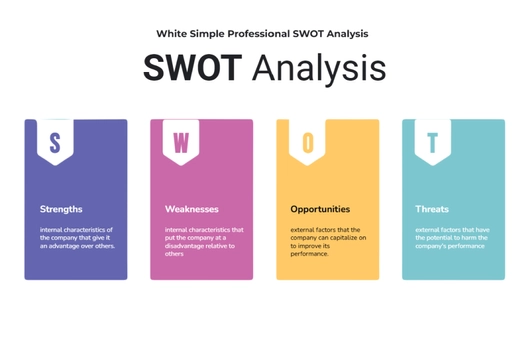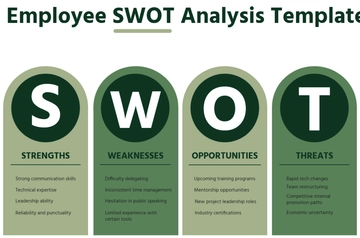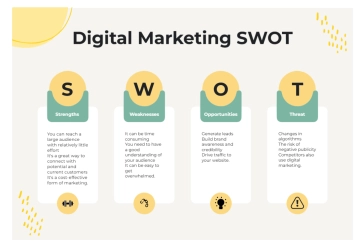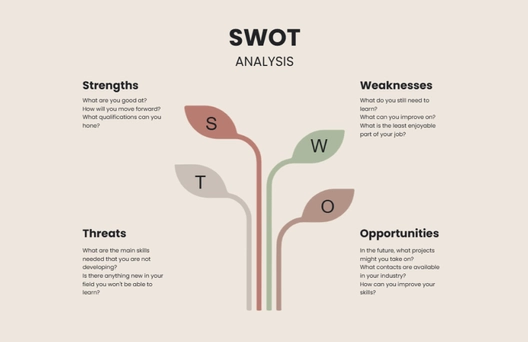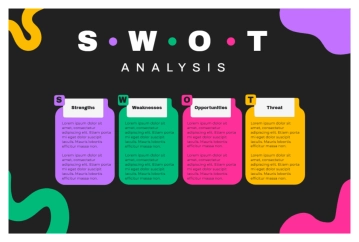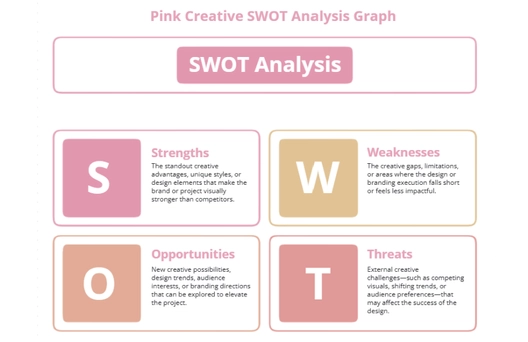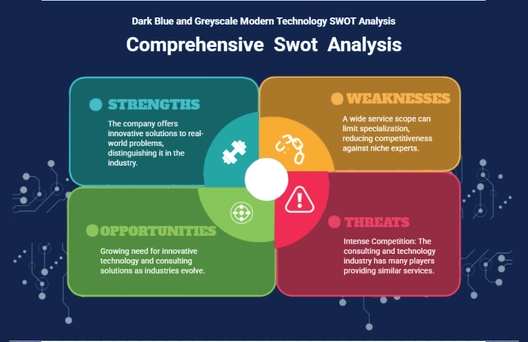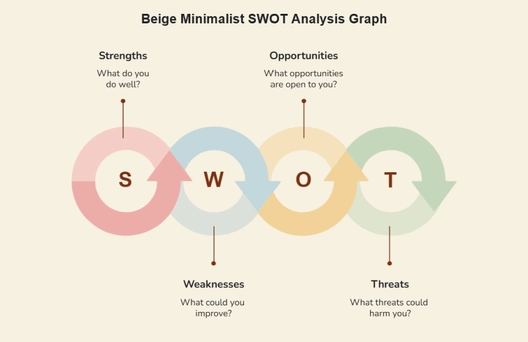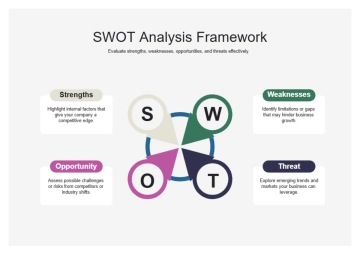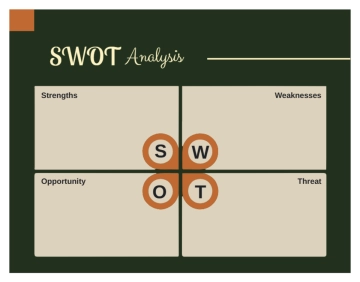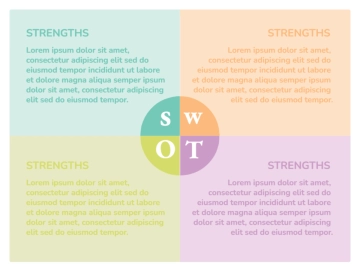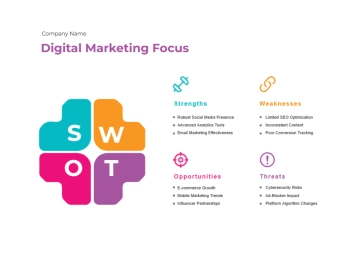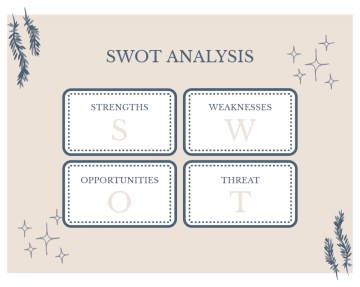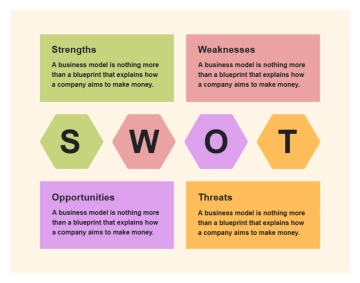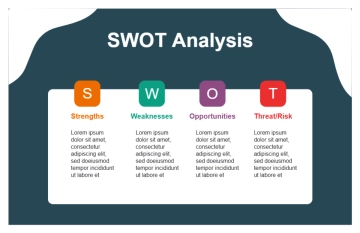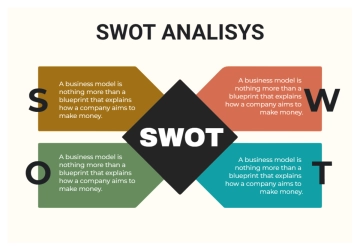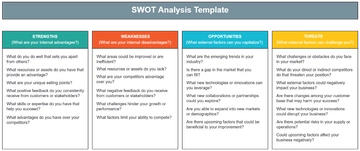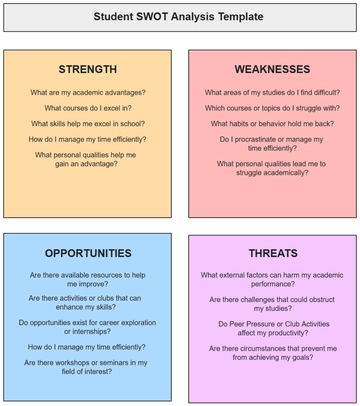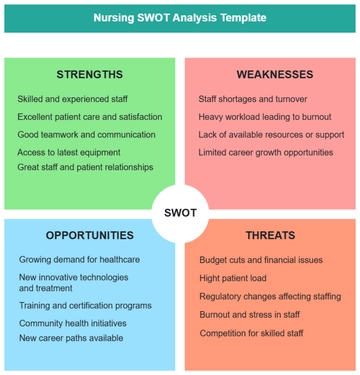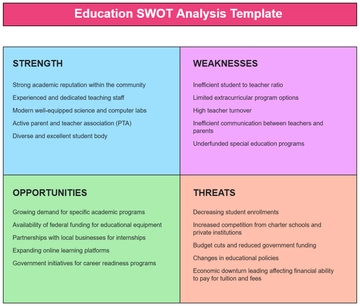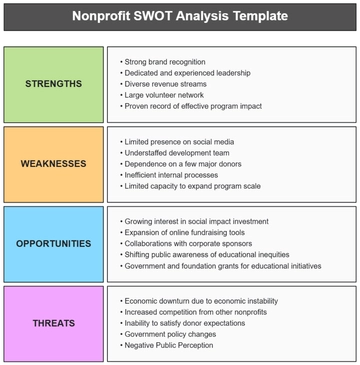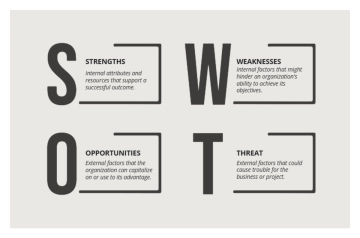Free Employee Wellness SWOT Analysis
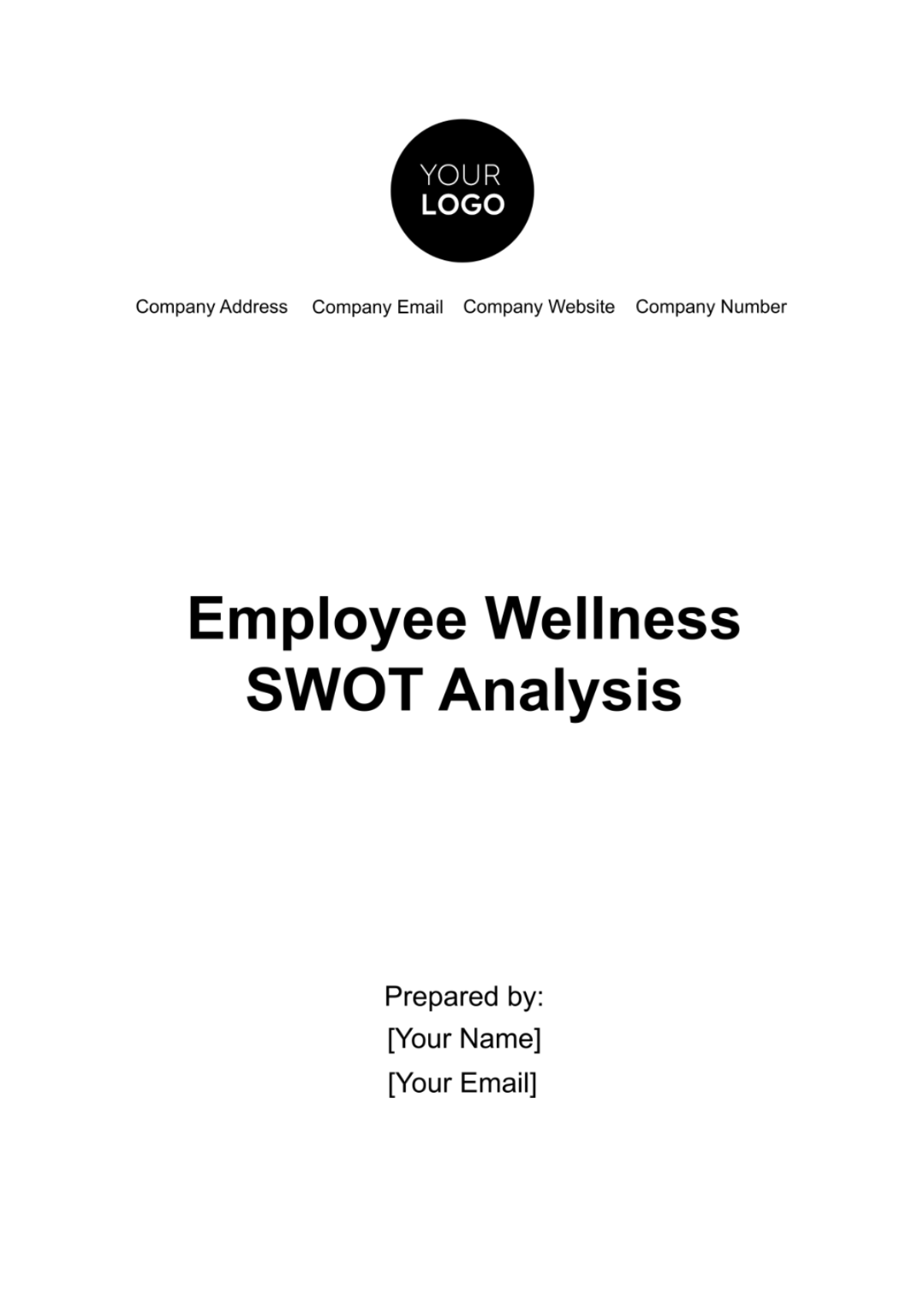
Introduction
In a corporate environment, the health and well-being of employees have emerged as pivotal factors influencing organizational success. Employee Wellness Programs, aimed at promoting and maintaining the physical and mental health of the workforce, are no longer a luxury but a necessity. This SWOT Analysis examines the multifaceted aspects of [Your Company Name]’s Employee Wellness Program.
It evaluates the Strengths, Weaknesses, Opportunities, and Threats associated with the program, providing insights into its current efficacy and future potential. The analysis is aimed at offering strategic recommendations to enhance the program's effectiveness and ensure it aligns with both employee needs and organizational goals.
Strengths
Comprehensive Health Coverage
Overview: Our wellness program offers an all-inclusive health insurance plan that covers a wide range of medical, dental, and mental health services. This includes preventative care, major medical expenses, and specialized therapies.
Impact: This coverage significantly reduces employees' stress about healthcare costs, enhances their overall well-being, and fosters a sense of security within the workplace.
Robust Mental Health Support
Access to licensed therapists and counselors.
Provision of 'mental health days' off work.
Regular stress management and mindfulness workshops.
Benefit | Employee Feedback | Organizational Impact |
Access to Counselors | [85%] Positive | Reduced absenteeism |
Mental Health Days | [78%] Positive | Increased job satisfaction |
Stress Management Workshops | [90%] Positive | Enhanced productivity |
Proactive Health and Wellness Initiatives
Overview: The program includes initiatives like on-site health screenings, vaccination drives, and health awareness campaigns.
Impact: These proactive measures have led to early detection of health issues, increased vaccination rates, and a more health-conscious workforce.
Fitness and Recreation Facilities
Facilities include a state-of-the-art gym, yoga studio, and recreational areas for sports. Additionally, the company sponsors participation in local sports leagues and marathons.
Facility/Activity | Utilization Rate | Employee Satisfaction |
On-site Gym | [60%] | [82%] |
Yoga Studio | [40%] | [79%] |
Sports Leagues | [30%] | [85%] |
Marathon Participation | [20%] | [90%] |
Employee Wellness Education and Training
Overview: Regular workshops and seminars on topics like nutrition, ergonomics, and mental wellness, often led by external experts.
Impact: These educational initiatives have increased employees' knowledge about health and wellness, leading to healthier lifestyle choices.
Flexible Work Arrangements
Overview: The program offers flexible working hours, the option to work from home, and a supportive environment for work-life balance.
Employee Feedback:
a. [92%] report improved work-life balance.
b. [88%] feel more motivated and engaged in their work.
Nutritional Services
Overview: On-site cafeterias offer healthy, nutritionist-designed meal options, along with nutritional counseling services.
Impact: These services have contributed to better eating habits among employees and increased energy levels throughout the workday.
Weaknesses
Limited Customization of Wellness Programs
Overview: The current wellness program employs a generic approach, which does not account for the diverse needs and preferences of different employee demographics, such as age, gender, lifestyle, and cultural background.
Impact: This lack of customization can result in lower engagement and effectiveness of the program for various employee groups.
Poor Communication and Awareness
Inadequate marketing and communication of wellness program details and benefits. Employees often remain unaware of the full range of resources available.
Resource | Awareness Level | Utilization Rate |
Mental Health Services | [40] | [25] |
Nutritional Counseling | [30] | [15] |
Fitness Facilities | [50] | [30] |
Health and Wellness Seminars | [60] | [20] |
Inconsistent Program Evaluation
Overview: There's a lack of regular and systematic evaluation to assess the effectiveness of various aspects of the wellness program.
Impact: This leads to missed opportunities for improvements and inability to effectively measure return on investment (ROI).
Limited Engagement in Health and Wellness Initiatives
Despite offering a range of initiatives, there is a noticeable lack of employee participation in many of these programs.
Initiative | Participation Rate | Identified Reasons |
Health Screenings | [25] | Lack of time, privacy concerns |
Fitness Challenges | [20] | Lack of interest, time constraints |
Wellness Workshops | [30] | Scheduling conflicts, lack of relevance |
Overemphasis on Physical Health
Overview: The program predominantly focuses on physical health aspects, like exercise and nutrition, with less emphasis on mental health and emotional well-being.
Impact: This imbalance can lead to neglecting crucial aspects of overall wellness, particularly in areas like stress management and emotional support.
Insufficient Support for Remote and Hybrid Employees
Overview: The wellness resources are mainly geared towards in-office employees, leaving remote and hybrid employees with limited access to many facilities and initiatives.
Employee Feedback: Only [20%] of remote employees feel adequately supported by the wellness program.
Opportunities
Incorporating Digital Wellness Platforms
Overview: Leveraging technology to introduce digital wellness platforms that offer personalized health tracking, virtual fitness classes, and online mental health resources.
Potential Impact: This would enhance accessibility for all employees, including those working remotely, and provide a more personalized wellness experience.
Enhanced Focus on Mental Health and Emotional Wellbeing
Expanding the program to include more initiatives focusing on mental health, such as mindfulness training, emotional intelligence workshops, and resilience building sessions.
Initiative | Participation Increase | Anticipated Benefits |
Mindfulness Training | [40] | Improved focus, stress reduction |
Emotional Intelligence Workshops | [35] | Better interpersonal skills, job satisfaction |
Resilience Building Sessions | [30] | Increased coping skills, reduced burnout |
Collaborative Wellness Challenges and Events
Overview: Organizing company-wide wellness challenges, health fairs, and team-based fitness events to foster a sense of community and encourage participation.
Impact: These activities can boost employee engagement, create a supportive wellness community, and encourage healthy competition.
Partnerships with Local Health Businesses
Overview: Establishing partnerships with local gyms, health food stores, and wellness centers to provide discounts and special offers to employees.
Expected Outcome:
a. Increased utilization of external wellness resources.
b. Strengthened ties with the local community.
Data-Driven Personalization
Overview: Utilizing health and wellness data analytics to tailor the wellness program according to the specific needs and preferences of individual employees.
Potential Impact:
a. Enhanced effectiveness of wellness initiatives.
b. Higher employee satisfaction and participation rates.
Expansion of Nutritional and Lifestyle Counseling
Providing more in-depth nutritional counseling and lifestyle coaching, including personalized meal plans and lifestyle modification strategies.
Service | Current Utilization | Post-Improvement Goal |
Nutritional Counseling | [15%] | [40%] |
Lifestyle Coaching | [10%] | [35%] |
Regular Employee Wellness Surveys and Feedback
Overview: Conducting regular surveys and feedback sessions to understand employee needs and preferences, and to measure the impact of the wellness program.
Expected Results:
a. Better alignment of wellness initiatives with employee needs.
b. Continuous improvement in program offerings based on direct feedback.
Threats
Budget Cuts and Financial Constraints
Overview: With a challenging economic climate, there's a risk of budget cuts impacting the funding available for the wellness program.
Potential Impact:
a. Reduction in the quality and variety of wellness services offered.
b. Possible discontinuation of less popular but essential wellness initiatives.
Rapidly Changing Health Regulations and Compliance Requirements
The nature of health care regulations and compliance requirements can necessitate frequent adjustments to wellness programs.
Regulation Change | Required Adjustment | Anticipated Challenge |
Data Privacy Laws | Enhance data security | Increased operational costs |
Health Insurance Mandates | Adjust insurance offerings | Need for ongoing legal review |
Workplace Safety Guidelines | Modify onsite facilities | Continuous adaptation and investment |
Increasing Health Care Costs
Overview: The rising costs of healthcare services can lead to increased insurance premiums and higher costs for providing comprehensive health coverage.
Consequence:
a. Strain on the budget allocated for the wellness program.
b. Potential reduction in the scope of health benefits offered to employees.
Technological Disruptions and Data Security Risks
Overview: As wellness programs become more reliant on digital platforms, there's an increased risk of cyber threats and data breaches.
Implications:
a. Need for robust cybersecurity measures.
b. Potential loss of trust among employees if their personal health data is compromised.
Shifts in Workforce Demographics and Preferences
Overview: Changing workforce demographics and preferences can make current wellness initiatives outdated.
Challenge: Continuously adapting the wellness program to meet the changing needs and preferences of a diverse workforce.
Employee Burnout and Disengagement
Overview: In an era of high workloads and constant connectivity, there's a growing risk of employee burnout, which can undermine the effectiveness of wellness programs.
Impact: Reduced participation in wellness initiatives. Lower overall impact of the program on employee health and productivity.
Conclusion
The SWOT Analysis of [Your Company Name]’s Employee Wellness Program reveals its strengths lay a solid foundation for promoting employee well-being. However, weaknesses pose significant challenges that need addressing to maximize the program's impact. The analysis also uncovers substantial opportunities that can propel the program to new heights of success. Yet, its threats require vigilant management and flexibility.
By leveraging its strengths, addressing its weaknesses, capitalizing on opportunities, and mitigating threats, the program can not only enhance employee well-being but also contribute significantly to the overall health and productivity of the organization. This strategic approach will ensure that the wellness program remains a valuable asset in the company's pursuit of a thriving and resilient workforce.
- 100% Customizable, free editor
- Access 1 Million+ Templates, photo’s & graphics
- Download or share as a template
- Click and replace photos, graphics, text, backgrounds
- Resize, crop, AI write & more
- Access advanced editor
Unveil insights to elevate workplace wellness with Template.net's Employee Wellness SWOT Analysis Template. This editable and customizable resource, enhanced by our AI Editor Tool, empowers comprehensive evaluation. Identify strengths, weaknesses, opportunities, and threats, crafting tailored strategies for optimal employee well-being. Drive organizational success with precision and innovation.
